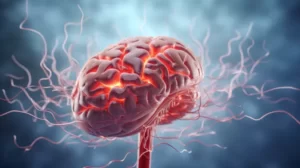Exercising might not always be fun, but you do it anyway because of its plethora of benefits — the biggest of which may be for your brain. A study from 2016 found that aerobic exercise not only prevents the brain shrinkage and cognitive decline associated with aging but actually reverses it.
The term “aerobic” applies to a broad range of exercises — anything that gets your heart pumping, such as running, swimming, playing sports, or even using an elliptical machine. So, which aerobic exercises should you do regularly? Which are really the best for your brain health?
Well, the truth is, any aerobic exercise you do daily can bring you significant brain benefits, although there is one aerobic exercise that has extra bonus benefits for your brain… dancing.
A new study from researchers at the German Center for Neurodegenerative Diseases found that dancing has unique brain and body benefits that other forms of exercise don’t have. In this study, researchers asked volunteers, who had an average age of 68, to take a weekly exercise course for 18 months. Half of the volunteers took a weekly dance class while the other half took an endurance training and flexibility class.
After 18 months of weekly exercise, both groups experienced growth in the hippocampus. That’s the part of the brain that’s responsible for learning and memory. It’s also the part of the brain that tends to shrink with age, leading to memory loss, dementia, and Alzheimer’s.
The dancers, however, experienced extra growth in two specific areas of the hippocampus—the dentate gyrus and the subiculum. The dentate gyrus plays an important role in episodic memory, and the subiculum helps with things like spatial navigation, mnemonic processing, and your response to stress. Researchers believe the additional brain growth experienced by the dancers occurred because dancing involves learning. The people in the endurance training class just did repetitive exercises like cycling or Nordic walking, but the dancers practiced different styles of dance and had to learn different routines regularly.
Essentially, dancing combines aerobic fitness (which is good for your brain health) with cognitive demands (which are also good for your brain health). It’s a win-win!
So, how can you get started with adding dancing to your routine? There are many ways to begin a dance routine:
- Sign up for a dance class
- Head to a dance club or maybe a country western bar with line dancing
- Join a flash mob
- Rent some dancing-related exercise DVDs from your local library
- Look on YouTube for free dance classes and workouts
And, if all else fails, you can always create your own dance routine in the privacy of your living room by turning up the volume on your favorite song and letting loose.
Taking the time to overcome any hesitations you have about dancing can be incredibly beneficial. Not only does it have profound health benefits, but it can also be fun when you let go of any fears about looking good or worrying about what other people think. So, give dancing a try — your brain will thank you!



